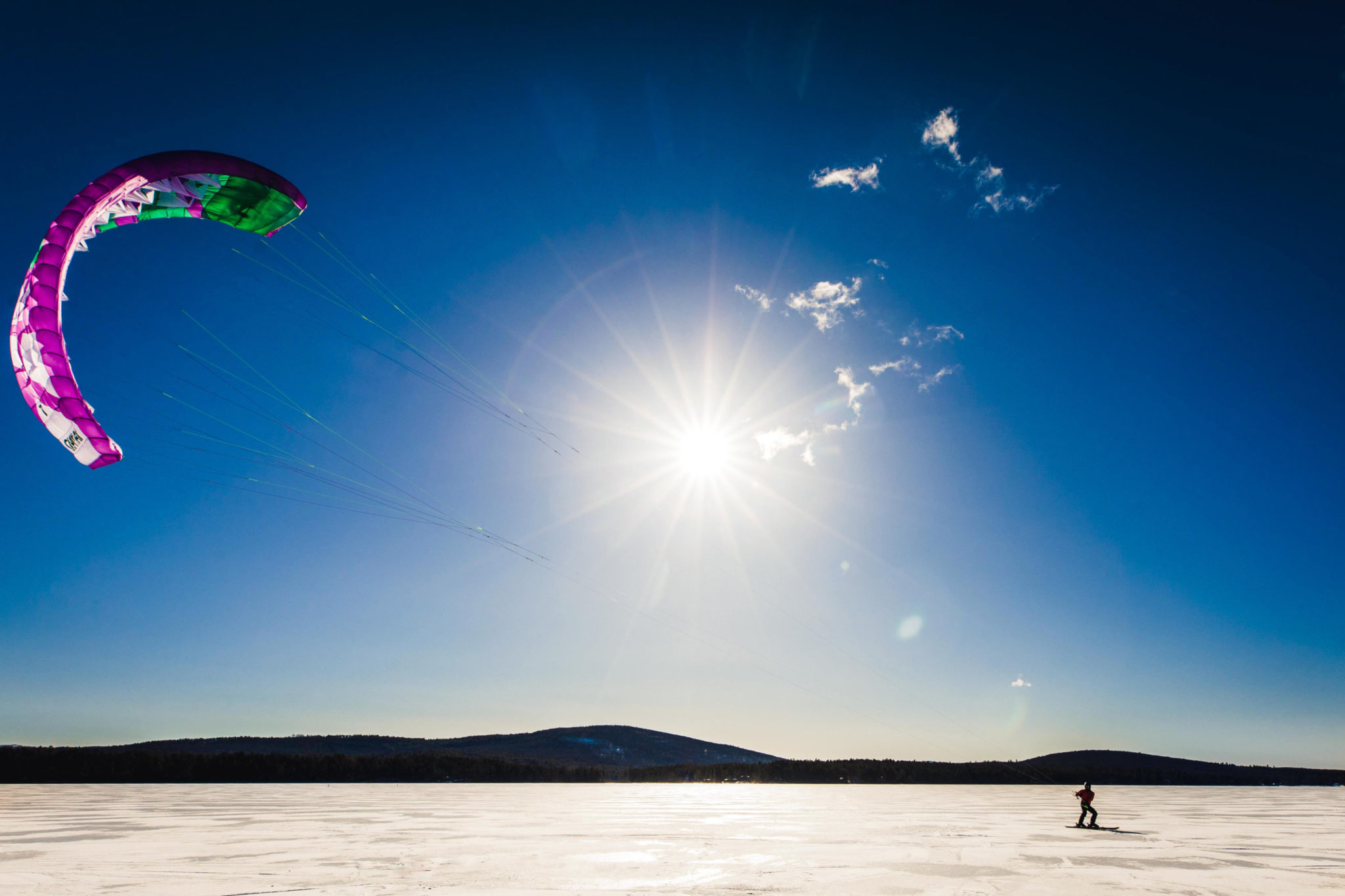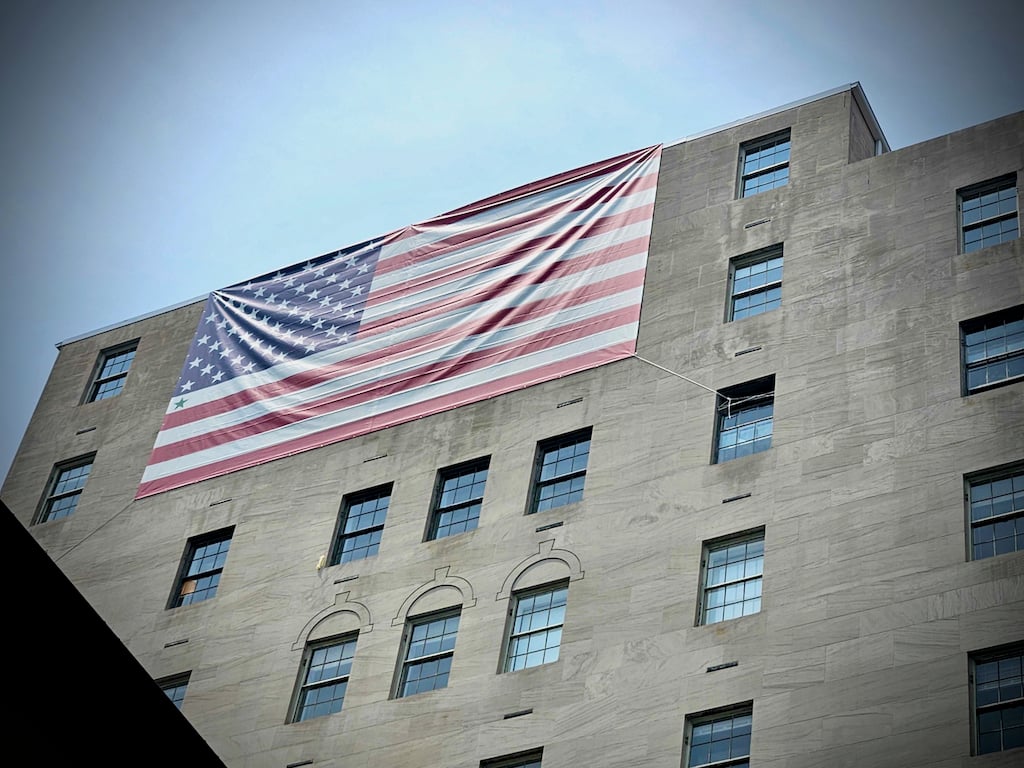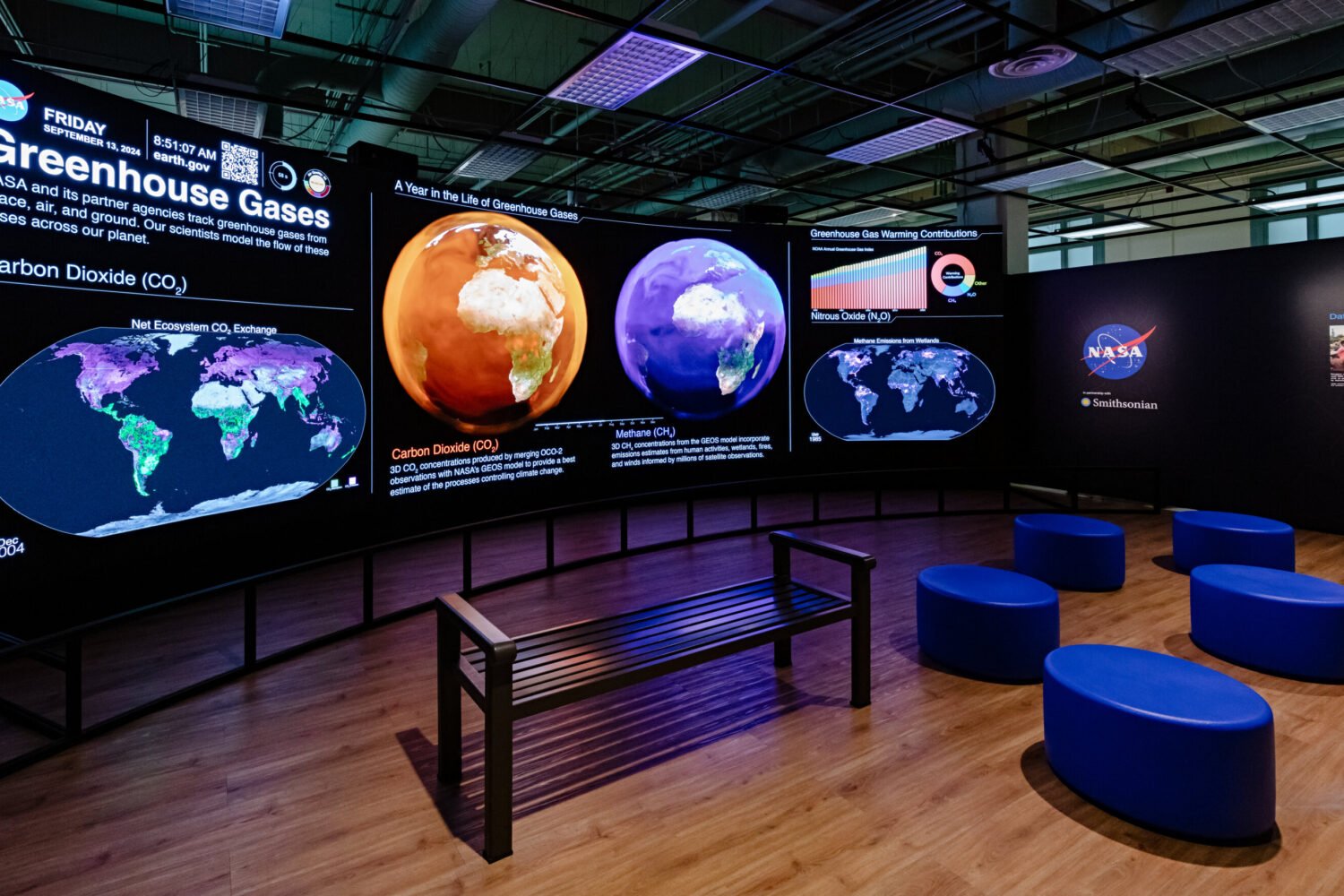Sebastien Audy had been trudging across Greenland for weeks. His left foot was broken. The tendons and ligaments in both knees were swollen and aching. One of his kneecaps was cracked. The icy wind lashed at his face, blistering his cheeks, and as he plodded, he pulled a 200-pound sled full of food and supplies. Now, just a few days from their destination well north of the Arctic Circle, Seb and his expedition partner, the renowned Belgian explorer Dirk “Dixie” Dansercoer, were entering the most dangerous stretch of their journey.
They had set off in the spring of 2021 on a trek that was supposed to cross 1,200 miles of Greenland, traversing the frozen island nation via snowkite. Picture two men on skis, towing sleds, dragged across the ice and snow by kites the size of extra-large parachutes—their fates entirely at the mercy of the winds. The goal was to challenge both of the experienced explorers physically and psychologically, and, more important, to use any media coverage to cast light on the catastrophic effects of climate change.
Seb, then a 42-year-old middle manager at the World Bank, had already summited the highest mountains on six of the seven continents—with only Antarctica left—and had trained for this exploration for months. A pathological exerciser, he already had the physique of a pro athlete but wanted to prepare in every way possible. So he worked out 25 hours a week for months on end: running, biking, lifting weights, rehearsing breathing techniques that would be useful in the wintry Greenland storms that can drop the temperature to 20 degrees below zero. He took off work in DC for snowy New Hampshire to practice turning a heavy snowkite back and forth in the wind. He was monk-like in his study of maps and in his packing: a waterproof down jacket and pants, two thermal shirts, boots, skis, a tuque (a Canadian beanie), and a tent that could protect him from even the fiercest, most frigid weather. He also packed enough food—mostly bland, nutritive energy bars—for nearly two months, just as Dixie had advised.
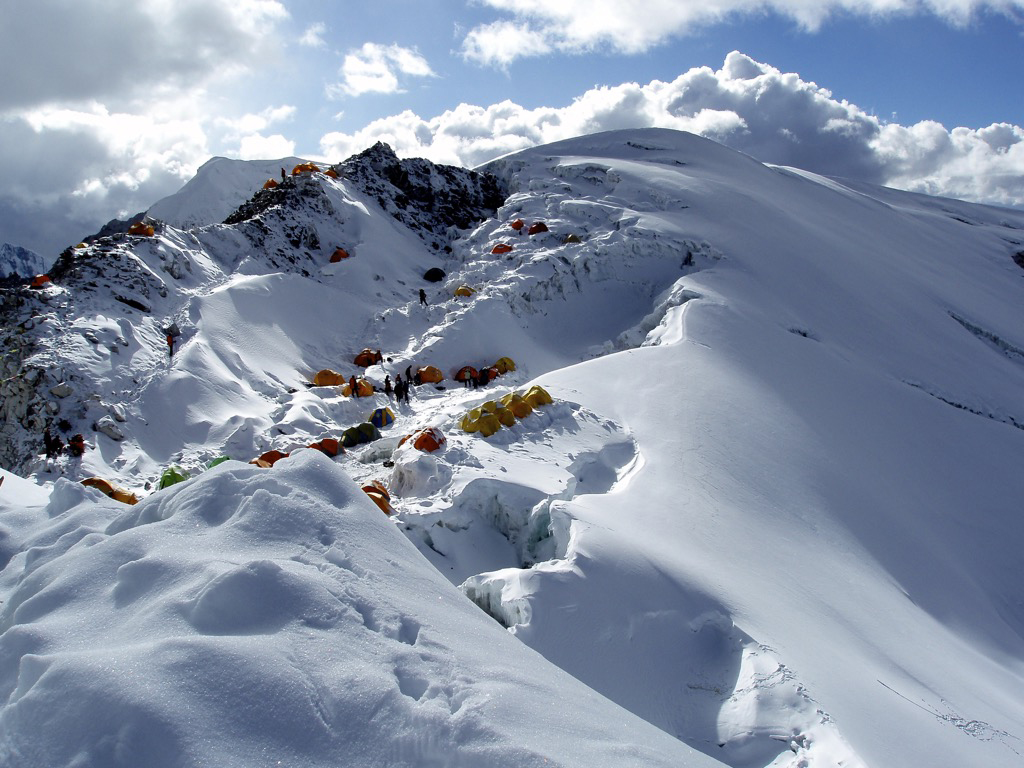
Dixie Dansercoer isn’t a household name in the US, but the 58-year-old explorer was already a legend in his native Belgium, known for both his daring, grueling polar expeditions and his staunch environmental advocacy. In 1998, he trekked across the entirety of Antarctica, a 99-day adventure. In 2007, he crossed the Arctic Ocean from Siberia to Greenland. That same year, his hometown of Nieuwpoort erected a 25-foot weathered-steel statue of him. Later, in a TED Talk, Dixie implored the audience to escape the comforts of modernity, to experience nature in all its forms. “Dare to walk the untrodden path,” he said with a coy, winsome grin. With Dixie, Seb knew he was with the very best.
For most of the day, June 7—a month into their journey—Dixie had been leading, sloshing across the snow at a terrific pace. Now they’d come upon an ice field riddled with deep, mostly invisible crevasses, some descending hundreds of feet. When they checked their position on the map, they realized they were closer to the western coast than they’d originally planned. They also noticed small pools of water on the ice, something Dixie, the veteran explorer, had never seen this far north of the Arctic Circle. The ice melts, they knew, meant the snowbridges covering the crevasses would be thin and unstable, so they pulled down their kites and advanced slowly.
At one point, Seb crossed over a short snowbridge—maybe 30 inches from one side to the other—and watched it collapse beneath him, opening to a deep, dark crevasse. Later, he’d say that seeing the snow tumbling down into the darkness was terrifying, but in the moment the men said nothing. They both understood: If the opening had been just a little wider, it would have swallowed Seb whole.
They stopped to compose themselves.
When they got going again, Seb was mostly looking down, trying to make sure he didn’t accidentally punch through the snow again. Every few seconds, he’d look up to orient himself, then back toward the terrain. When he looked up, he could see he was about three feet behind Dixie. It was a reassuring sight: the legendary polar explorer, plodding forward as he had been for weeks now.
Then, in an instant, Seb saw Dixie disappear.
For years, even some of Seb’s closest friends and coworkers didn’t know that he was a part-time explorer, that he risks life and limb—literally—to journey to the most remote, dangerous parts of the planet. He wasn’t hiding anything. He just didn’t talk about that part of his life. He’s remarkably modest for someone trying to change the world.
His life at home in Bethesda is pretty buttoned-down, ordinary-seeming. He’s been married ten years and has a seven-year-old son. He recently became a senior VP of business transformation at a medical-research corporation. Before that, he was at the World Bank for a decade, implementing automation technology. The work is mildly interesting, mostly mundane.
Once or twice a year, though, he takes time off, leaves his wife and son at home, and ventures to a polar icecap or to the top of one of the tallest mountains in the world, experiencing in real life the kind of frostbitten adventures most of us only read about in Jack London novels.
Sometimes people ask Tania variations of “Why would you let your husband do these things?” She usually laughs.
Seb grew up in a small town in Quebec, the second-oldest of four kids. When he was little, he thought he might be a farmer, someone who works hard, outdoors, using his hands. He also played soccer, baseball, and hockey and dreamed of making it to the NHL, but at five-eight he was never tall enough. Instead, he studied business, got a consulting job at Deloitte, and started working 80 hours a week straight out of college. After a few years of feeling “unbalanced,” he decided he needed a side project. Something that would force him to step away from work.
It had to be something that allowed him to improve himself—he’s a student of self-help literature on positive thinking and maintaining a “growth mindset” as well as a devout practitioner of yoga and meditation. It had to be something fitness-oriented. Something intense. After some contemplation, he settled on mountaineering.
“Nature, to me, is a peace harbor,” he told me in a delightful Quebecois accent the first time we talked. He was walking through Norwood Park in Chevy Chase. “It doesn’t need to be all the spectacular nature, the Grand Tetons,” he said. “Just seeing a nice urban park, even massive trees, makes me feel at peace and connected.” Seb often speaks in gentle aphorisms, as if Bob Ross had discovered the joy of extreme-weather camping instead of a wet-on-wet paint. “Beautiful scenery makes my heart feel light.”
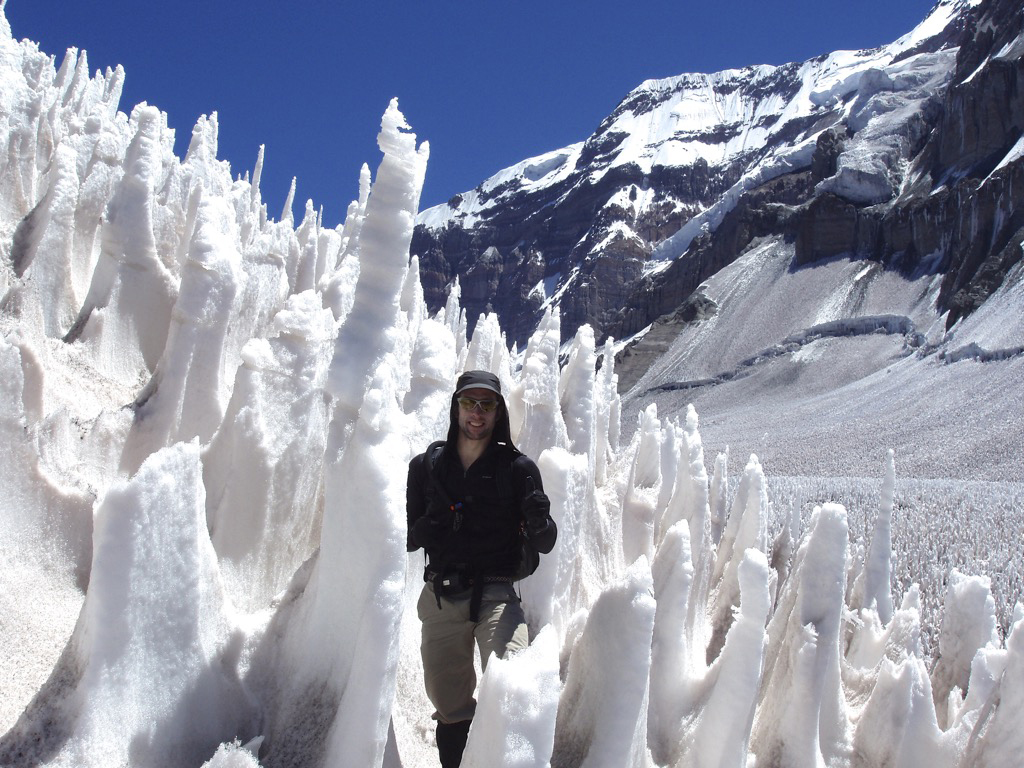
In 2006, he signed up for a commercial expedition to scale Aconcagua in Argentina, the highest peak in South America. He spent weeks building his body and sharpening his mind. He bought top-of-the-line gear, studied everything he could on the 22,000-foot Aconcagua, and reached out to mountaineering veterans for advice. “Growing up watching National Geographic documentaries, I always dreamed of scaling the tallest mountains in the world,” he says now. “It really gave me direction.”
When he got back, he couldn’t stop thinking about the mountain, about how he had set an extraordinary goal for himself—then did everything required to achieve it. He’d never felt a rush like that.
The year after, he climbed Denali in Alaska, the tallest mountain in North America. Then Kilimanjaro. Then Everest. Then Elbrusz in Russia, the highest peak in Europe.
Seb loved the planning and the preparation, the prospect of stretching his personal limits, pushing to the edge. He’d always loved to travel, and now he was seeing places most humans never set eyes on. When he started dating Tania, the woman he’d eventually marry, she understood right away what the trips meant to him. “Sometimes he’s gone for a month, two months,” she says. “Every time he comes back, his body is tired and he’s lost all this weight. But he just has this shine.”
He didn’t share tales of his adventures much at work, nor did he seek out press, but after a few years he realized that the people around him enjoyed hearing about his journeys. He thought his expeditions might have a larger purpose. Maybe he could inspire strangers to improve themselves, or at the very least expand their appreciation of the outdoors. Maybe he could even motivate some chunk of the world to address what he considers the most important challenge of our time: the urgency of climate change.
Of course, history is filled with daring explorers who have ventured to the edges of the earth for all manner of reasons. For some, it’s been a chance to etch their names into history. For others, it was a way to run from scandals at home. Some risked their lives for science, some for wealth. At the turn of the 20th century, men like Robert Falcon Scott and Roald Amundsen raced to the South Pole, mostly for the international acclaim they knew would come from getting there first. Ernest Shackleton launched expeditions across both Antarctica and the Northwest Passage in an effort to plot new points on the map, to better understand this planet—and to escape the doldrums of his everyday life. He braved death to finally feel alive, and died in the process.
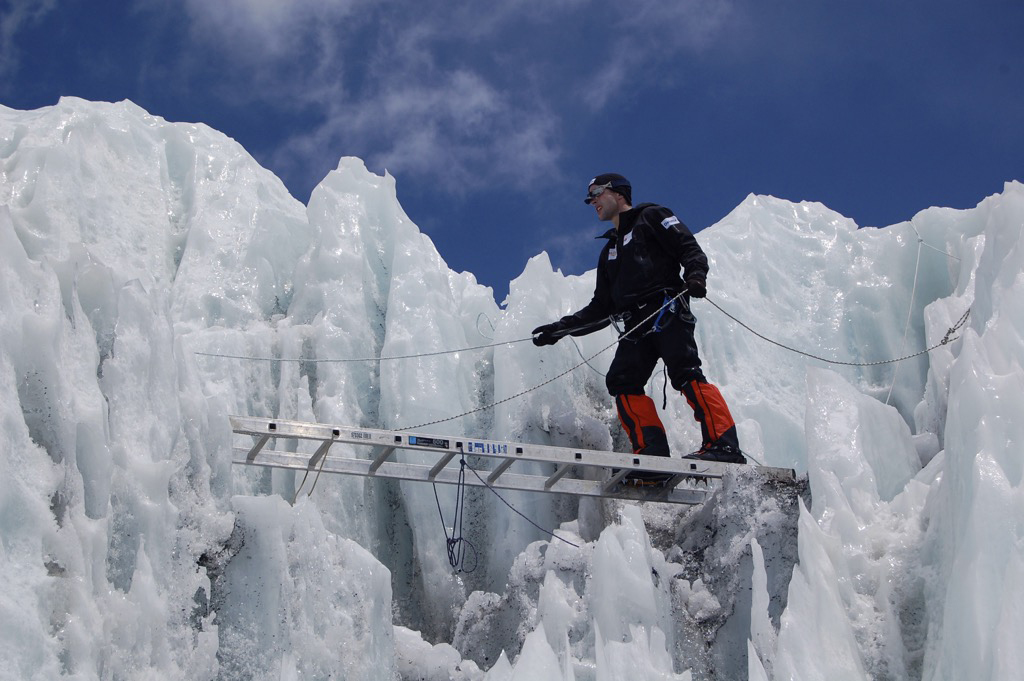
Over the last 30 years, though, the world of exploration has been more focused on intercontinental quests, elite challenges endowed with bragging rights in the adventure-sports communities. Anyone who scales the tallest mountain on each continent, for example, joins the “Seven Summits” club. Someone who climbs the Seven Summits and reaches both the North and South Poles is said to have completed the “Explorers Grand Slam.”
Sebastien Audy would love to go down in history as one of the great explorers. He’s captivated by the thrill, too, and the way a looming expedition seems to help him order his time and priorities. But he also does it for a cause. He partnered with United Way, so his expeditions raise money for the victims of hurricanes and typhoons and other extreme weather hastened by a rise in global temperatures.
“That’s when it really clicked.”
For a long time, Seb and Dixie didn’t know if they’d even be able to get to Greenland. In 2020, the country completely shut its borders to visitors as a precaution against Covid. By spring of 2021, though, the restrictions eased and vaccinated travelers could enter under certain conditions. Once the men arrived, they had to quarantine for a week. (Seb nonetheless got permission to snowkite on a frozen lake while they waited.)
When they emerged, Seb was surprised to see the way people were living in Greenland. No need for masks or distancing. People spending time together inside, even sharing food. “It was really interesting to have this experience of living a pre-pandemic life for a few days before the departure of the expedition,” he’d say later.
The men traveled to the tiny town of Narsarsuaq on the southern tip of Greenland. From there, they planned to have a helicopter drop them off on an icecap, where they’d officially begin their journey. But when they got to Narsarsuaq, a massive windstorm made helo transport impossible. A few times, it looked like the weather would break and they’d load up all their gear—only to see the winds pick up again, forcing them to unload their stuff and wait some more.
After a week of whipsawing, the winds finally calmed enough and they landed on the icecap on May 6. Then for eight days, there was almost no wind at all. So instead of snowkiting and covering up to 30 or 40 miles every hour, they dragged their sleds—in the exploration world, this is called manhauling—and covered only a sliver of the distance they’d hoped to go each day.

When the wind eventually picked up and they were able to move a little faster, it felt to Seb as if this giant island had opened up for them. The lakes were an unreal shade of teal. The sky—with the summer sun that never completely set—was impressionistic, textured and mottled like an oil painting. Roughly 80 percent of Greenland is covered in ice, which sounds sort of dull. But the glaciers crest and plateau in ways more beautiful than he could have imagined.
Most mornings, Seb woke up warm inside his thermal sleeping bag. He’d melt snow for the day’s drinking water and down a quick 2,000 calories: oatmeal, nuts, coffee. Then he’d add coconut oil to his hot thermos for another 1,000 calories on the go. The men would break down camp, then ski for ten or 12 hours. They’d find a site with accessible snow, eat some more, hydrate thoroughly, and tuck themselves in for the night.
Only a few days after they finally started gaining ground, another hellacious storm was moving in on the radar. This one promised hurricane-force winds that would turn even hunkering down in a tent into an existential trial. So they headed for a point on the map labeled DYE-2: an abandoned US military radar station in the center of the island, once used to monitor the Soviet Union during the Cold War. They pushed themselves to travel 12 hours straight—barely even breaking for snacks—crossing close to 150 miles in a day.
They arrived just before the storm and stayed there in the abandoned station, talking, listening to the howling winds, meditating. They explored the relic—once home to dozens of American troops at a time—and saw the old workshops, the barracks, the bars where cold warriors would get drinks once they were off-duty.
For the first time in two weeks, Seb and Dixie encountered other people: a group of Swiss explorers crossing the country west to east. Everyone was excited to meet Dixie, and they swapped stories about dangling off cliffs and defying sudden shifts in the weather.
After six days, the windstorm ended and the two groups parted ways. But now the terrain Seb and Dixie encountered was even worse than before, rippled with frozen ice waves known as sastrugi. The undulations were spectacular and brutal—a relentless opponent that rumbled the passing sleds and turned every second of snowkiting into a painful, jittering seizure. As Seb’s legs absorbed thousands of tiny jolts a day, the pain grew excruciating.
Early on, he noticed the signs of a stress fracture in his left foot. Then his knees swelled: bursitis and tendinitis. An MRI would later reveal that the constant pounding against the ice, like a jackhammer in the bitter cold, had split one of his kneecaps. Still, the men kept on.
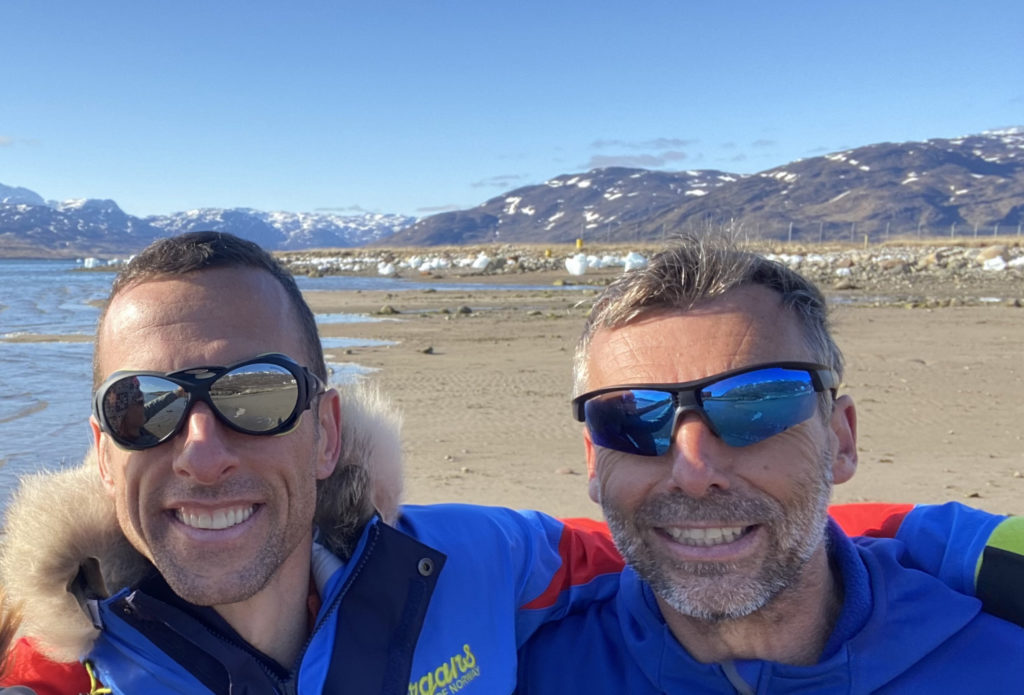
Seb and Dixie had become close. They’d known each other only two years, but between their quarantine, their delays, and the epic conditions, the pair had now spent more than 40 straight days in close company, tackling one setback after another. Seb realized he’d never experienced a stretch like that even with his wife. Despite everything, he recognized his own fortune, getting to spend time with a giant of the endurance-sports universe, who also happened to be warm and funny. When Dixie talked about the time his food rations were running short in Antarctica or the time he saw a polar bear in the Arctic, his eyes would widen like a little boy’s. The men discussed their lives at home, the other trips they wanted to take together. At one point, they planned to have their families meet.
They also talked about the changes they’d seen in the environment during their years of exploring. Glaciers shrinking, icecaps melting earlier in the year than they used to, fewer animals in the wild. On the trip, they collected snow samples every morning and evening, with equipment provided by the University of Copenhagen, for a team of Danish scientists to analyze later. With only a small scoop of Greenlandic snow, researchers could look back through hundreds—maybe thousands—of years of atmospheric conditions. Braving the freezing temperatures and harsh terrain, both men considered themselves modest eco-warriors.
As they crossed into the Arctic Circle and got closer to the end point, they pushed harder to cover more and more ground. Each night, they’d plan the next day’s route together. But the evening before they ventured into the crevasse zone, Seb wasn’t in on the planning. When they set up camp after another long day atop the punishing sastrugi, he realized he’d dropped his GPS tracker. It must have fallen out of his pocket when he’d reached for something, about a mile away, he guessed. So he set off to look for the device while Dixie plotted where they’d go the next day.
Less than 300 miles from their final destination in Qaanaaq, on the island’s northern end, Dixie wrote in his journal: “Nice temperatures, terrain wonderful and perfect visibility.”
For five years, Seb stopped exploring. After their son, Logan, was born in 2014, Seb and Tania decided he should take a break from the sport. He took up running marathons and qualified for Boston on his first try. He competed in a “century” ride—a 100-mile bike race—and completed an Ironman triathlon. Nothing gave him the same elation of scaling a mountain miles into the sky, though.
By the time Logan was five, his parents decided Seb should get back into extreme adventuring. Seb concocted a plan for a series of excursions at both poles. The first phase was the trip across Greenland. The rest involved separate expeditions that included skiing to the North Pole. Then skiing to the South Pole. Then scaling Mount Vinson, the highest peak on Antarctica. He branded this series of expeditions La Grade Percée—The Big Breakthrough—and partnered with the United Way to collect any donations made during the fundraising campaign. He began promoting this grand plan to his modest following online, describing it as “an opportunity to combine extreme achievement with extreme contribution.”
Sometimes Seb is invited to give motivational speeches. He shows photos from his outings, tells stories about the challenges he’s faced—such as when his oxygen mask stopped working while he was climbing Mount Everest but he kept going anyway—and tries to work in as many uplifting messages as possible. But he also talks about balancing the three competing currents of his life: his career, his exploration, and his family.
“Family is always the most important,” he says.
When he’s home, Seb is sort of the superhero dad, always up for a piggyback ride and unrelenting during a game of tag. When it snows, he gets Logan into a snowsuit and onto a sled, then he runs sprints up and down the street and the nearby hills, pulling his son so fast the other kids in the neighborhood all get jealous.
“The other kids look at their parents like, ‘Oh, my God, Mommy, I want to do that,’ ” Tania says. “And the other moms and dads are not going to do that.”
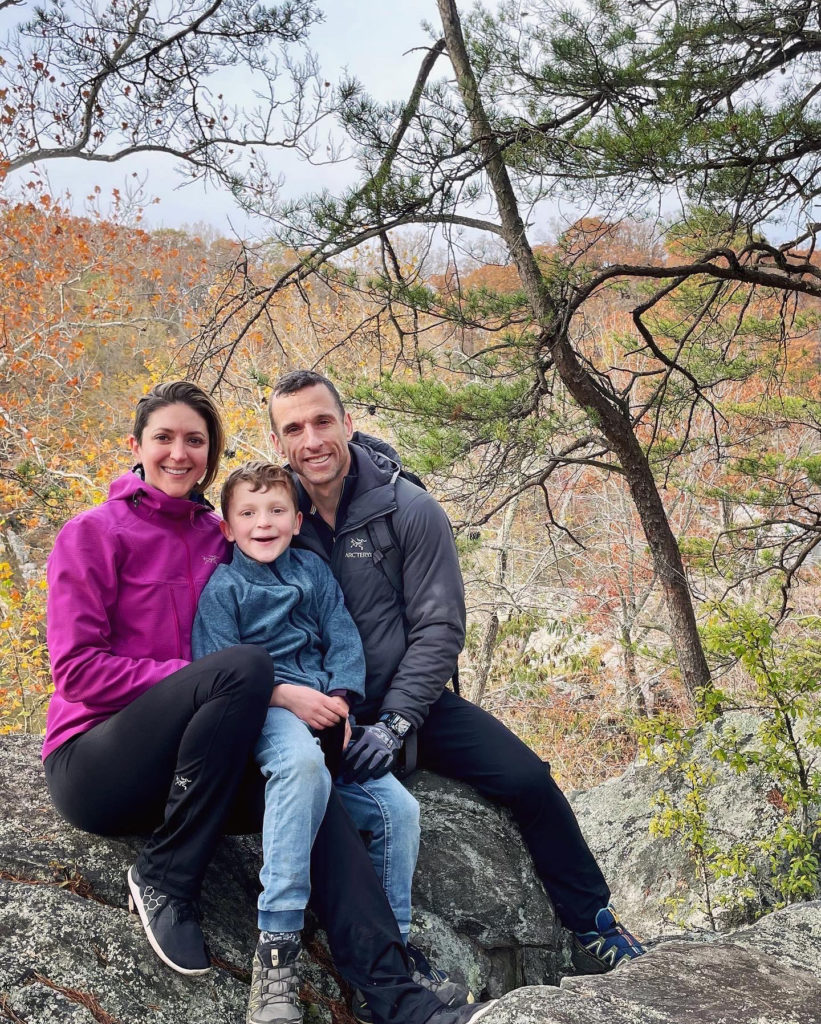
But yes, these trips take him away from his wife and son—not to mention his job—for more than a month at a time. When there’s no wind to move the kites, or when an icy storm stretches on for almost a week, it’s hard not to dwell on what you left behind.
Sometimes people ask Tania variations of “Why would you let your husband do these things?” She usually laughs.
“I’m not allowing it,” she explains. She knows there are risks. She’s not in denial. But she, too, believes in raising awareness of climate change, in helping the people most drastically affected, in whatever small way they can. Plus she knows how much it means to her husband. “Not letting him do it would make no sense for me.”
Sometimes she trains with him. Sometimes she helps him pack. She’ll join him on some of the shorter trips, spend a week or two in a tent—but not five or six.
“I also like nature,” she says. “Just not as much as him.”
Tania is an osteopath and helps Seb with everything from nutrition planning to recovery. When he broke his foot in Greenland, he snapped a photo and sent it to her. Yeah, it looks like a stress fracture, she told him, but at least the bone wasn’t coming through the skin. “We are together in this project,” she says.
While he’s away, she watches his GPS dot move across the map on the computer. They text daily, and sometimes—especially when Logan has big news he wants to share—they’ll check in quickly via satellite phone. Logan traces his father’s movements using a globe and counts down on a calendar the days until his return, with a drawing of a plane landing on the day Dad is scheduled to come home.
Of course Tania worries. But she tries to avoid the lingering thoughts she might have as she’s going to bed alone. She reminds herself that Seb has hardened himself as well as anyone possibly could, mitigating every risk possible: If anyone could get himself out of a terrible situation, it’s her husband.
“Seb is one of the strongest people I’ve ever met.”
When Seb and Dixie woke up the morning of June 7, the sun was shining and the weather—just barely below freezing—seemed perfect. Both men were excited to be closing in on their final destination. They pushed themselves, as they’d done so many other days.
The first sign of trouble came from the horizon. Seb could see the mountains on the western coast, and he knew something was wrong. “It should have been another day or two before the mountains were visible,” he told me.
The crevasses were camouflaged, like traps waiting for them beneath the snow. And they were everywhere. After Seb’s close call, the men slowed down even more—but it was only a matter of minutes before Dixie’s accident.
Seb crossed over a short snowbridge and watched it collapse beneath him, opening to a deep crevasse. If this opening had been a little wider, it would have swallowed him whole.
As soon as Dixie fell, Seb knew what had happened. He was drained and sore, but he didn’t panic. He had trained for just this type of situation. He knew he could save his partner.
First he needed to assess the damage and understand how badly Dixie was hurt. So he stretched out flat, face-down on the ice at the lip of the crevasse, peering into the darkness below. But he couldn’t see anything.
Seb used his satellite phone to call their base scan manager and initiate a rescue operation. The expedition manager contacted a rescue team in Upernavik, a small fishing village on an island with an airport. But Seb knew it would take at least four hours for any helicopter to reach them. He called Dixie’s wife to tell her Dixie had fallen into a crevasse, and he held the phone up to the edge in hopes that Dixie could hear her telling him she loved him.
Seb used his trekking pole to punch holes in the ice, creating a 40-by-40-foot flat helipad to ensure that once the rescue team arrived, they could get to work immediately. He carved a path from the helipad to the crevasse. Every ten or 15 minutes, he’d go back to the opening in the earth, trying to maintain a connection with Dixie.
At first, he could hear what sounded like grunting coming up from the darkness, but after an hour or so, the sounds stopped. Seb kept calling down, to tell Dixie how much he’d learned in these weeks together, that he wasn’t going to leave him, help was coming. But now all he heard in return was ear-splitting silence.
“It’s a friendship,” Seb would explain later. “But it’s hard to describe because you’re going through so many hardship experiences.”
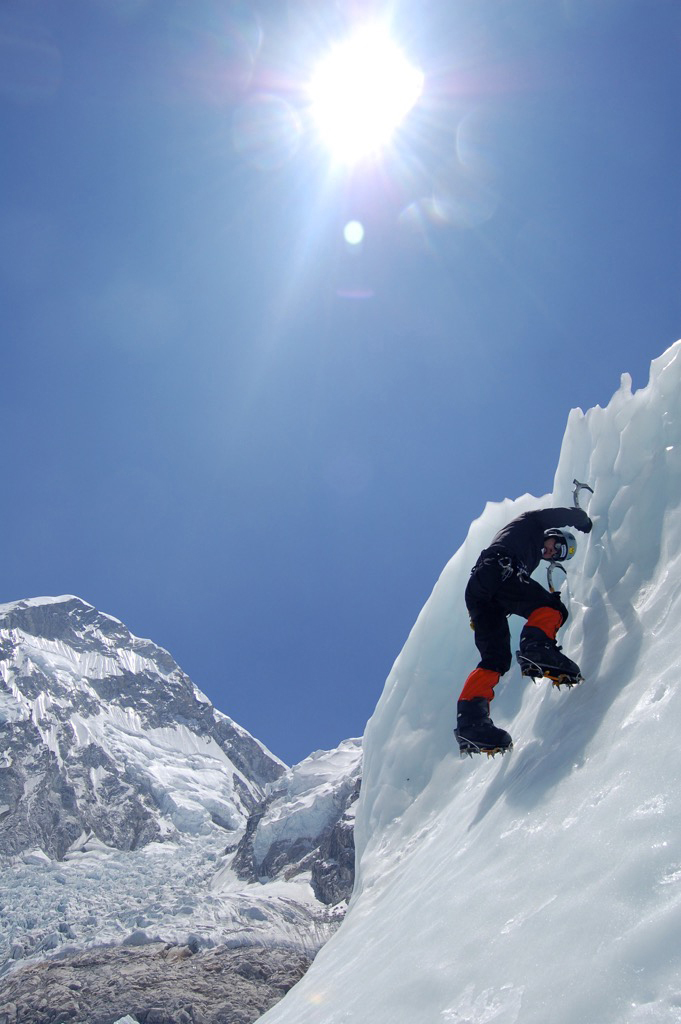
Looking back, he would be glad he could focus on accomplishing the tasks at hand. It kept him occupied. But then came a moment when there was nothing else to be done. The impromptu landing pad was complete. The path to the crevasse was prepped. Seb debated going into the crevasse himself. He wanted to bring Dixie water. He wanted to hold his hand. But he knew he didn’t have the right gear. He didn’t even know how deep the hole was.
So he set up his own tent and tried to stay hydrated, telling himself he needed to be ready to help when the rescuers arrived. He forced himself to eat half of a protein bar. When he got restless, he’d go back to the lip of the crevasse to see if he could hear Dixie, to tell him again that he loved him, that the rescue helicopter was getting closer.
As he sat there in the frigid air, helpless, Seb’s mind clouded. The pit of his stomach swirled with guilt and shame. What could they have done differently? Why had they veered toward the coast so soon? Why was it Dixie in the crevasse and not him?
Months later, he still struggles to find the right words for the trauma. “It was devastating,” Seb says. “I was really—” He stops mid-sentence to think. “I felt like it was very—” Then another pause.
“It was shock.”
The rescue team included a doctor and three climbers. Once the helicopter landed, Seb helped the team dig holes to anchor the ropes. He tried to get out of the way as the rescuers rappelled into the earth, their headlamps beaming around the void. Seb watched as the light moved lower and lower in the crevasse.
“Dixie!” one of the rescuers called out.
No response.
“Dixie!”
Time suddenly seemed to tick by faster and faster. At some point, the rescuers found Dixie’s sled lodged in the narrowing crevasse, about 130 feet down. Even with high-powered lamps, though, there was no sign of the Belgian. They went down another 45 feet. Still no Dixie.
As it got deeper, the crevasse became harder to navigate. Judging by how far they’d already descended, the crew guessed the hole might be 300 feet deep. The light from their lamps was now barely visible from the surface. The ropes seemed stretched to their limits.
Eventually, the rescuers came back up.
“I’m sorry,” one of the men told Seb. “It’s too dangerous.”
It took a moment for Seb to realize what they were saying—that they were going to leave Dixie’s body down there, in the frozen blackness.
Seb wanted to protest. He wanted them to stay, to keep at it until they came up with his friend. But he also didn’t want to make the tragedy any worse than it already was.
“I’m so sorry,” someone said again.
They loaded Seb and both sleds onto the rescue helicopter and headed for Kangerlussuaq, a village on the island’s western side. It was 3 am when they landed. The night sun hovered in the sky, casting a hazy light across the horizon.
Seb was taken to the small hospital. Doctors there gave him something to help him sleep. But he woke up 15 minutes later on the floor, ramping on his belly like he was at the edge of a crevasse, calling out for Dixie. When Seb closed his eyes, he could see Dixie falling over and over. He could hear him grunting at the bottom of the crevasse and the chopping swooshes of the helicopter as it floated him up and left his friend there.
Over the next week, Seb worked with authorities to piece together what had happened. Once he got home, his thoughts would hurtle back to the abrupt end of the expedition. For now, though, he focused on settling Dixie’s affairs, making sure all his belongings were sent back to Belgium.
Seb tried to collect his thoughts in an online journal. “Goodbye, Dixie,” he wrote. “There is now a new protector in the polar sky. You have inspired so many adventurers, who, like you, are defenders of these great spaces of freedom. Your heritage is immortal, and I hope you will be proud of us.”
By the end of his second day in town, word of Dixie’s death had spread—the prime minister of Belgium tweeted condolences to Dixie’s family, calling him a “limitless adventurer and climate advocate”—and the locals began approaching Seb in the street. Some just gently shook his hand, locking their eyes on his. Others invited him to their homes to share a meal. Some strangers simply came up and hugged him.
When he got back home, an MRI revealed the extent of the damage to Seb’s body. Weeks passed before he could walk without wincing. He had a series of doctors’ appointments, but the advice was mostly the same every time: rest, eat, sleep. Slowly, the bones in his foot and knee healed. The swelling in his tendons and ligaments went down. Tania made him soups and curries, and he started to regain some of the weight he’d lost.
But even when the physical wounds faded, Seb was left with a pain so unfamiliar it felt unspeakable. Tania had never seen him so quiet, so listless. Sometimes he couldn’t talk about the trip without tearing up. Sometimes he couldn’t talk about it at all.
For the first time in his life, Seb went to therapy. Five times, he cleared an hour from his schedule to sit in a room with a therapist who specializes in PTSD and comb for the words that might begin to describe the pain. He’d always known something like this could happen—he’d rehearsed catastrophic scenarios for years—but in the end, none of that prepared him for the crushing guilt. The shame that seemed to linger over him like a cloud. La Grande Percée was going to be a way of stirring wonder, building a legacy, maybe even provoking change. These adventures were about affirming life. How could he have let Greenland go so wrong?
“How can you turn this trauma into something that can help you grow, become a better human?”
Seb and Tania tried not to talk about the tragedy around their son. He was too young to understand what happened anyway. And that helped. Being with Logan, observing the pureness of his son’s love for the outdoors—over time, it helped Seb’s heart feel lighter again.
Eventually, the nightmares stopped and he started sleeping through the night. He still thought about Dixie all the time, but he made an effort to turn his thoughts to the happy times they shared early in the trip. “How can you make sense of this?” he says. “How can you turn this trauma into something that can help you grow, help you become a better human, help you make a more impactful contribution?”
He understands the irony, the facts that have given cruel meaning to the expedition. The environment in Greenland was so dangerous specifically because the temperatures there were warmer than normal. The ice over the crevasses was thinner, the bridges more brittle. The unexpected—but then again, not so unexpected—conditions and the death of a great explorer: The trip illustrated the way the planet is changing more than all of Seb’s earlier adventures combined.
Was all of this worth it? Was the elation of a completed expedition worth the ripples of pain touching so many people?
Initially, Seb wasn’t sure if he wanted to carry on with La Grande Percée. He and Tania talked about their future—this project they’d both worked on so long, the tens of thousands of dollars and time spent over the years—with a new perspective. They knew it could have been Seb who fell that day in Greenland. But they also thought about what Dixie might want. He’d talked frequently about expanding endurance sports, about the need for young blood in the world of exploration.
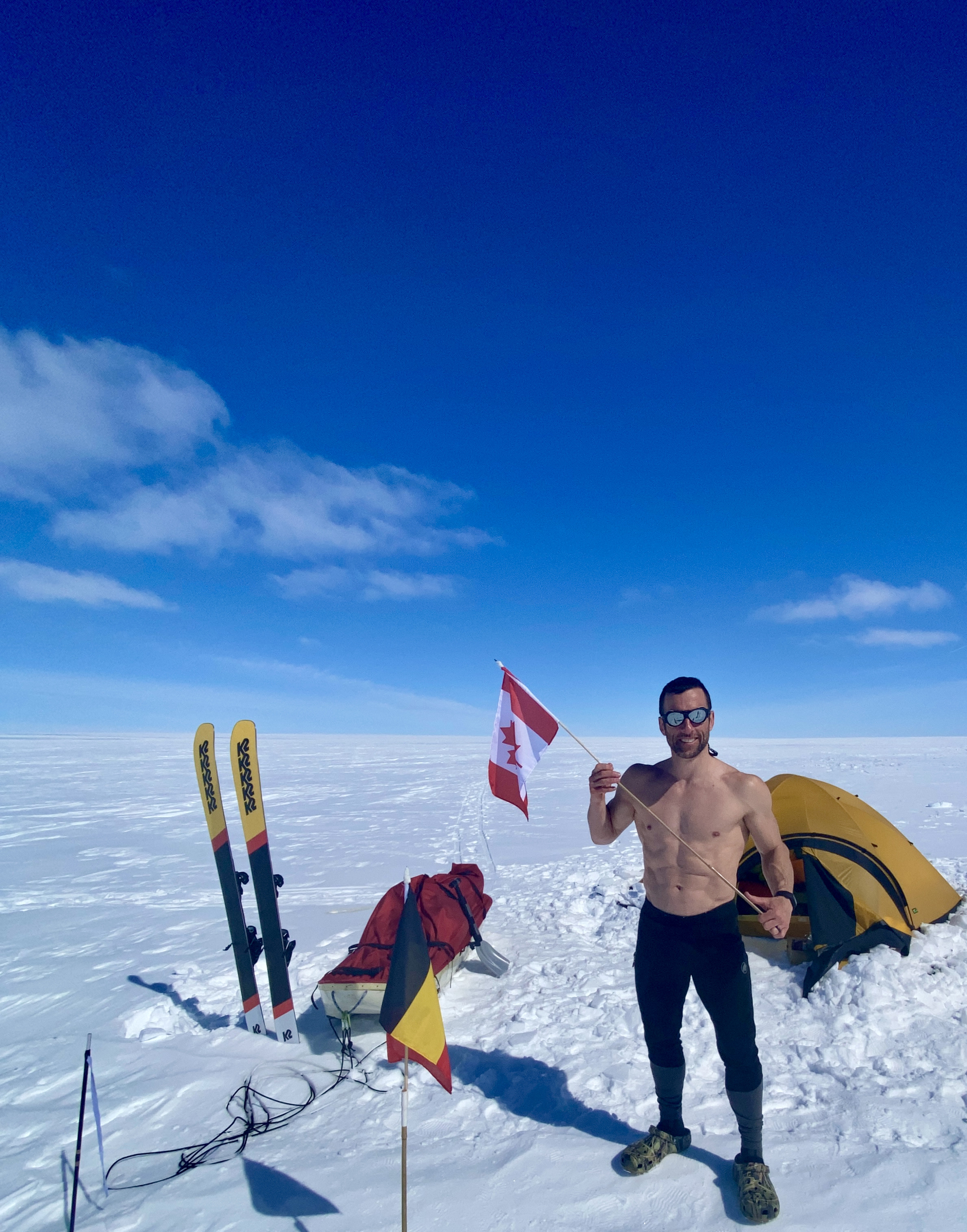
“This experience was just so intense that it’s just transformed me,” Seb says. It didn’t feel right to halt the project after Greenland. “It just opened up my heart in a massive way and actually gave me this tremendous drive for future expeditions.”
Tania is pregnant again, due in August. In April, when his wife will be five months along, Seb is going to the North Pole, just like he planned. In the fall, he’s going to climb Mount Rainier in Washington—a quick domestic excursion. And at the end of 2022, he’ll leave his wife and son and newborn baby to go to the South Pole, where he’ll summit the tallest peak on the only continent he hasn’t conquered. He plans to complete The Big Breakthrough.
After that, he says, he’ll step back from these prolonged, extreme expeditions. He doesn’t intend to stay home, though. He wants to go hiking in Norway with Tania and their kids. He wants to share a polar experience with his entire family, camp in a tent with them in the cold. He sounds excited just talking about it.
“It will probably only be for one or two days,” he says. He pauses. “Maybe three.”
This article appeared in the April 2022 issue of Washingtonian. It has been slightly revised since its publication.
